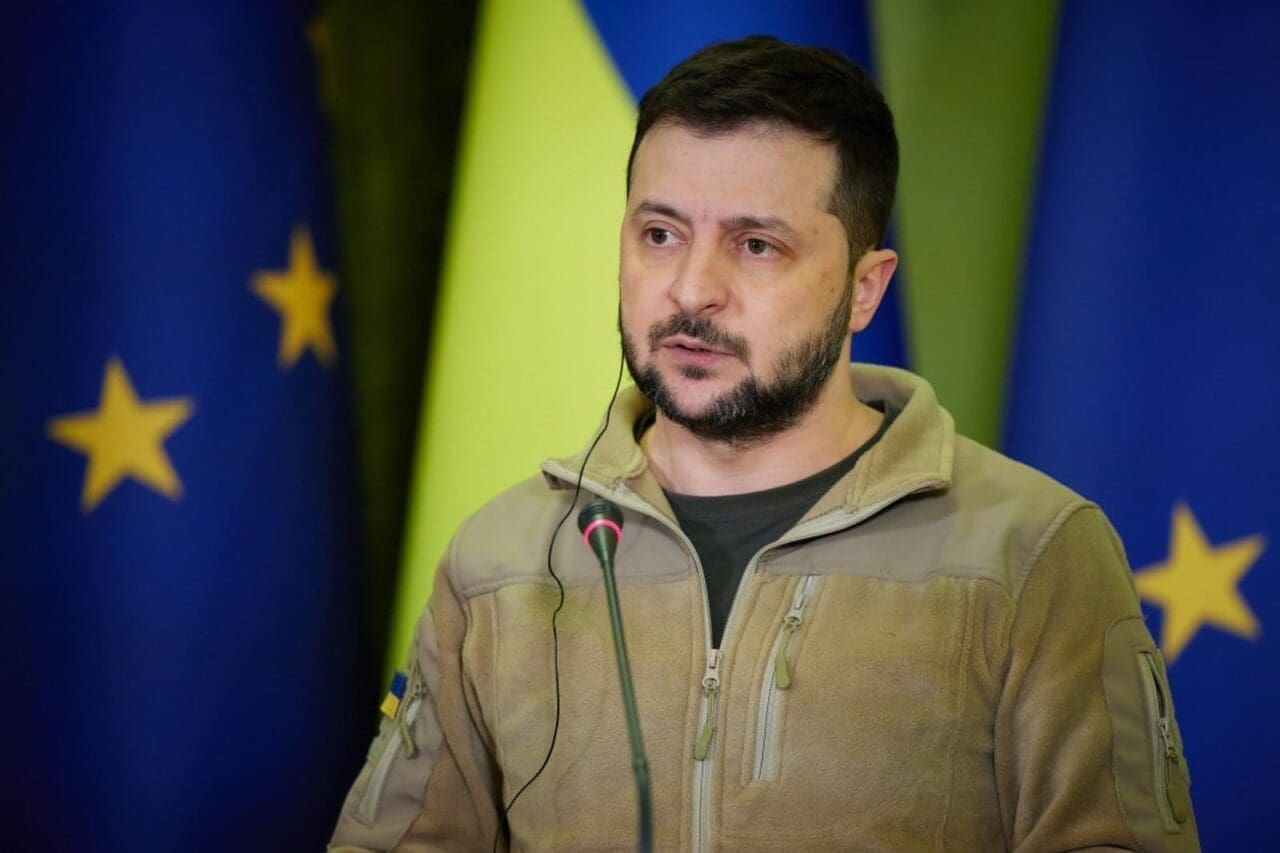Recently updated on October 5th, 2024 at 01:05 pm
The war in Ukraine continues…
Zany: Im curious to know if anyone else has a similar opinion regarding the difference between the wars in Ukraine and Gaza. I can still remember the images posted on social media during the first months of Russia’s invasion into Ukraine. One video in particular stands out: Someone was recording as they drove down a street in Ukraine. Dead bodies littered the street and sidewalks. Not the bodies of soldiers, but citizens. A man lay dead on the street with a bike next to him after being gunned down as he rode. You can find it on YouTube—it’s too graphic to post here.
I also remember the stories of Russia bombing hospitals and maternity wards. Apartment buildings were left without power or heat during the cold of Winter. Families were holed up in an underground parking garage, sleeping in tents. One man was brave enough to venture out each day to drive around store to store, restaurant to restaurant, foraging for food he could bring back for the group. People were freezing in high-rise apartment buildings, particularly the elderly who could not (or would not) leave their home.
Then came the stories of Ukrainian children being kidnapped and raised in Russia. The list goes on and on. What surprises me (well, maybe not…) is how easily Americans forgot about what was happening to the innocent civilians of Ukraine, citizens who bravely fought back, and now condemn Israel for their treatment of Palestinians. Don’t @ me, you know how harshly I’ve been condemning Israel while strongly advocating for Gaza. My intention is not to suggest the lives of one country’s innocent civilians are more valuable than another. I’m simply questioning why so many fighting to “free Palestine” have criticized the money and ammunition recently allocated to Ukraine. Why are the horrors of kidnapped children, murdered civilians, and millions and millions of people displaced and hungry in Ukraine not worthy of our assistance?
I hope you won’t take offense to anything I’ve said here. I’m simply interested to know what others think is the cause—other than sympathy fatigue when it comes to Ukrainians—of people no longer caring about the civilians of our ally, who are under attack by our enemy. Let me know your thoughts in the comments, please.

U.S. military assistance is finally on its way to Ukraine after months of being held up in Congress.
Reactions to the US$61 billion spending package, signed into law by President Joe Biden on April 24, 2024, have ranged from applause to indignation.
While few people could deny it includes ammunition and equipment that Washington’s besieged Eastern European ally sees as crucial in its war with Russia, critics of the package say that money is better spent on domestic priorities.
But if that $61 billion seems like a lot to spend now, it’s nothing compared with what will be needed in the months and years to come.
The World Bank estimates the cost of rebuilding Ukraine at over $480 billion – around eight times the amount Congress authorized in the latest round of U.S. military aid.
That tremendous sum reflects the fact that postwar recovery is a complex, expensive process. But, as someone who studies the economics of conflict and recovery, I believe it’s a process in which the U.S. must be involved. There are compelling humanitarian and strategic reasons for America to help rebuild postwar Ukraine – even if it comes at a high price.

Rebuilding infrastructure
Achieving long-term stability in Ukraine will require political, social and economic recovery. Money is needed for everything from rebuilding hospitals and recovering farmland to removing land mines and reopening schools.
At the center of any postwar reconstruction effort, however, is infrastructure. Robust, well-functioning infrastructure is essential for providing basic services such as housing, energy and transportation. It’s also the scaffolding that supports economic recovery.
Infrastructure’s critical importance is precisely why it’s so often targeted during war. Destroying factories, bridges and power plants thwarts a country’s warfighting capacity. At the same time, it undermines a government’s ability to offer basic public services. It’s no surprise, then, that Russia has systematically attacked Ukraine’s transportation networks and energy production since the start of the invasion.
The damage has been catastrophic. An estimated $100 billion worth of infrastructure was destroyed in the war’s first month alone. Now, as the conflict enters its third year, at least half of the country’s energy grid and one-third of its transportation networks have been damaged as a result of Russian attacks.
And the situation continues to escalate. Drone and missile strikes throughout early 2024 have been aimed directly at Ukrainian power generation and distribution, reducing energy companies’ output by up to 80% and leaving nearly 2 million people without power.
The result is not just a political and economic crisis but also a humanitarian one. Lost power, along with damage to medical and educational facilities, has contributed to the massive displacement of more than 13 million people from areas where they can no longer receive daily necessities such as food, power and health care. The United Nations’ refugee agency estimates that no less than 40% of the country needs urgent humanitarian support.

The cost of not investing
Ending the war won’t end Ukraine’s crisis. Aggressive investment is needed. Any failure to fully invest in reconstruction risks deepening social strife, threatening the rule of law, depressing economic growth and undermining faith in democratic institutions.
Put simply, failing to repair a country’s infrastructure leads to longer-term instability.
Of course, U.S. opponents of spending money abroad may remain unswayed by arguments over the benefit to Ukraine’s economy. But they may be more persuaded by the potential financial impact to both the global and U.S. economies.
In today’s interconnected world, instability somewhere can hurt countries everywhere, especially when that “somewhere” is Ukraine – a central hub of energy distribution and food production, having provided 10% of the world’s grain prior to the conflict.
The past few years have laid bare the invasion’s broader economic and strategic implications. The war drove inflation by sending energy prices upward in Europe, dampening economic growth across the continent and resulting in enormous budgetary obligations to manage the shock at home.
In countries less able to absorb these shocks, such as Egypt and Tanzania, price hikes exacerbated problems of food insecurity and hindered local agricultural production by reducing supplies of vital fertilizers from Russia.
In short, the economic opportunity costs of the war are even greater than the costs of recovery. And failing to invest sufficiently in postwar recovery will widen this gap even further.
Encouraging investment
That all said, coming up with the half-trillion dollars the World Bank estimates for Ukraine’s recovery will not be easy.
Recognizing Ukraine’s mounting needs, the European Union pledged over $50 billion in support in early 2024, in addition to what it had committed already, while the the Group of Seven leading democratic economies, or G7, promised another $40 billion. Those commitments are significant, given that the G7’s official development assistance averages about $120 billion a year for all projects around the world.
Some of this money goes into efforts under the World Bank’s Ukraine Relief, Recovery, Reconstruction and Reform Trust Fund, which in turn falls under the World Bank’s broader Multi-Donor Resources for Institutions and Infrastructure for Ukraine program.
The World Bank’s Ukraine trust fund focuses specifically on critical infrastructure repairs such as roads and housing.
These programs could prove essential to Ukraine’s reconstruction but are unlikely in themselves to be enough. Quadrupling the G7’s average commitments of $120 billion a year still wouldn’t cover Ukraine’s bills, and it wouldn’t leave anything for needs elsewhere around the world.
Governments simply do not have the money – never mind the political will – to meet Ukraine’s critical needs.
But there are things that still can be done to help cover costs. The first, hardest option is an end to the war. The swelling costs of reconstruction, which increase with each day of fighting, should provide even more reason for outside countries to push for peace. This does not have to mean settling all the difficult territorial questions, which will probably require unpalatable compromises on both sides. But short of a full, lasting settlement, even temporary cease-fires can, at a minimum, limit additional economic damage.
Ending the fighting also mitigates the risk that currently deters private investment in Ukraine.
Foreign investment in Ukraine fell a precipitous 96% from 2021 to 2022 because of the uncertainty created by the war. Yet private capital represents an untapped resource capable of co-funding critical infrastructure projects.
G7 development agencies, along with multinational development banks, can lessen the financial burden by aggressively pursuing co-financing arrangements and additional risk guarantees to mobilize the private sector. Doing so could help close the widening gap between what Ukraine needs and what governments can offer.
Ultimately, then, NATO governments don’t have to assume all the financial responsibility of rebuilding Ukraine. But failing to mobilize more financial assistance, and leaving Ukraine in a cycle of instability, may end up costing much more.

Jeffrey Kucik is affiliated with the Wahba Institute for Strategic Competition at the Wilson Center.
The article featured in this post is from The Conversation and republished here under a Creative Commons License. Read the original article.








